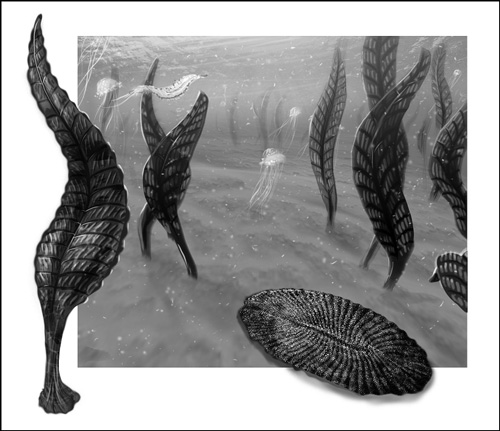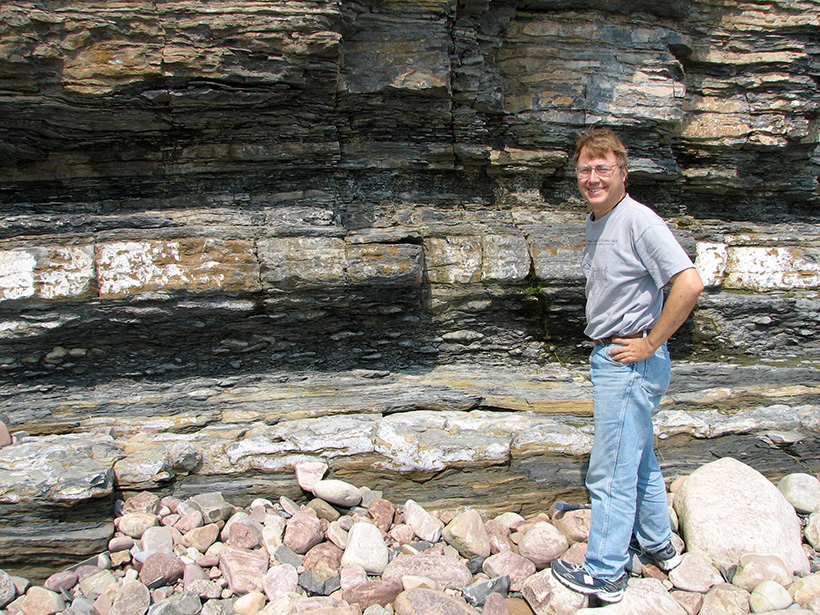Andrew Knoll has studied the evolution of life, the history of our planet, and the interplay between the two for more than 40 years. Out of his laboratory at Harvard University, he tackles questions that straddle biology and geology and strives to draw connections between these fields rather than isolate them as distinct areas of research. His new book, A Brief History of Earth: Four Billion Years in Eight Chapters, illustrates these interconnections and distills the planet’s 4.6-billion-year history into eight digestible chapters written for the general public.
This conversation has been edited for length and clarity.
Eos: What was your intent in writing this book?

Knoll: This is my attempt to teach not only about the Earth, and the story that’s in the rocks underneath our feet, but to put this remarkable geological moment of the 21st century within the context of our planet’s history.
I am hoping the general public will become more aware of the interactions between the physical Earth and the biological Earth through time. I think there’s this sense that the Earth is this passive platform that evolution plays out on, but that’s overly simplistic. The Earth is dynamic. It both influences and is influenced by the biota.
Eos: Who do you hope reads this book?
Knoll: I think of my kids, my brother, my neighbors. It really is a book for a general readership. It is not really written for the 50 people in the world who do the kind of thing that I do.
Eos: Do you think readers will be surprised by anything within the book?
“There are events in Earth’s deep history that hold up a distant mirror to what we have going on today.”
Knoll: I think it’s useful for the public to know that we’ve seen things like 21st century global change before. The Earth is warming, we’re losing oxygen in the oceans, the pH of the oceans is going down in what we call ocean acidification. And that’s all due to human activities. But if you go back to the end of the Permian period, 252 million years ago, the same thing happened, driven by massive volcanism. So one of the things that I find really interesting, and I hope will be of interest to the general public, is that there are events in Earth’s deep history that hold up a distant mirror to what we have going on today.
Eos: What made you want to work on this project amid your ongoing research?
Knoll: I’ve often likened scientific research to making bricks. On a daily basis, most of us are producing very specific, limited contributions. But at some point, you’d like to stand back and see what the whole building looks like. So in a sense, this was the opportunity that I took to do that.
Eos: This isn’t the first book you’ve written. How did you develop your writing practice, and how do you approach this type of writing compared with more academic work?
Knoll: I’ve learned to write by reading. Whether it’s a journalistic article or a novel or a history book—if I like it, then I sit down and think about why I like it. Every time you pick up something to read, you have an opportunity to learn.
In all of these cases, you have to think about your audience. Since I’ve been in an area where I’ve been working to try and understand the cross talk between Earth sciences and biological sciences, out of necessity I’ve learned how to communicate in a fairly broad way. And that just then broadens out even more when you try to communicate with, let’s say, a high school senior.

Eos: How do you think science communication today compares with science communication 45 years ago when you were first beginning your career?
Knoll: In a lot of ways, it’s better. When I was a kid, I think the best way to become prominent as a scientist was to find some narrow area where you could be the expert and drill down as deeply as you could. I think now we live in a more integrative age of science, so that the advantage comes to people who have what my old friend Walter Alvarez used to call peripheral vision. You have to be able to explain to someone in another field why what you’re doing impacts their field. So that really puts a premium on having scientific breadth and on being able to communicate to people outside of your own immediate field. And I think you see that all over the place now.
I’m not sure that communicating to the public was highly prized among scientists 40 years ago, but now I think that most scientists appreciate the need to communicate and are more supportive of their colleagues who do.
Eos: What’s one thing you hope readers take away from your book?
Knoll: I hope they gain an enhanced appreciation for how our moment in history came to be—and, in knowing that, will take greater pains to help ensure that we have a world that conserves as much as we can for our grandchildren.
—Laura Poppick (@laurapoppick), Science Writer
Citation:
Poppick, L. (2021), Communicating Earth’s deep past: A Q&A with Andrew Knoll, Eos, 102, https://doi.org/10.1029/2021EO157655. Published on 27 April 2021.
Text © 2021. The authors. CC BY-NC-ND 3.0
Except where otherwise noted, images are subject to copyright. Any reuse without express permission from the copyright owner is prohibited.

